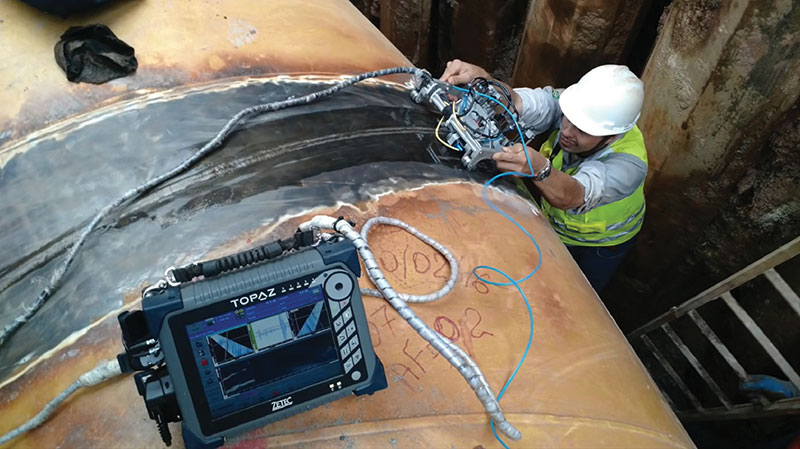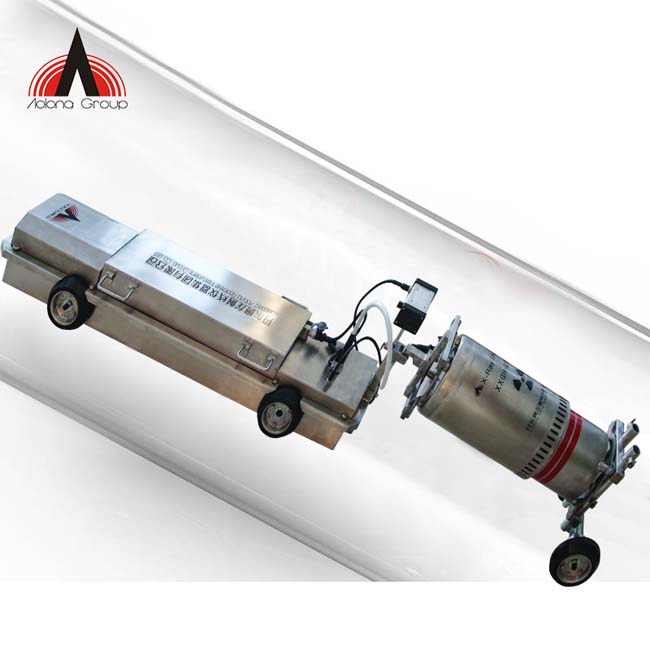Experience Excellence: Premier Pipeline Welding Inspection Services You Can Depend On
Wiki Article
Comprehensive Summary of Pipeline Welding Evaluation Treatments
Pipeline welding inspection treatments play an important role in assuring that bonded connections meet stringent industry criteria and specs. From careful pre-welding assessments to detailed post-weld evaluations, a well-defined inspection procedure is vital for preserving the structural soundness of pipes.Pre-welding Inspection Preparations
Prior to starting the welding procedure, complete pre-welding assessment preparations are important to make certain the honesty and top quality of the weld joint. These preparations involve a thorough exam of the materials to be welded, the welding equipment, and the job atmosphere. By conducting extensive pre-welding assessment preparations, possible problems can be identified and settled early on, leading to high-quality and reputable weld joints.Welding Treatment Qualification
Detailed pre-welding inspection preparations lay the structure for the essential process of Welding Treatment Qualification, ensuring the honesty and quality of the weld joint. Welding Treatment Qualification (WPQ) is an important action in the welding process that involves testing and certifying welding treatments to guarantee they meet details requirements and requirements. The WPQ process usually consists of welding treatment spec growth, welding procedure certification testing, and paperwork of the outcomes.During welding treatment requirements development, important details such as the welding procedure, welding materials, joint design, and welding specifications are defined to produce a thorough treatment. Subsequently, welding procedure credentials screening is conducted to verify the suggested treatment's honesty. This testing usually involves welding test vouchers that undergo numerous mechanical and non-destructive tests to evaluate the weld's top quality and adherence to the defined standards.
In-process Weld Inspection
Throughout the welding procedure, in-process weld examination plays an essential function in making sure the high quality and honesty of the weld joint - Pipeline Welding Inspection. This sort of inspection involves keeping track of the welding specifications, analyzing the weld bead formation, and discovering any type of prospective problems or suspensions as they happen. By carrying out in-process weld assessments, welding operators can quickly deal with any kind of concerns that might develop, consequently ensuring and preventing more flaws that the final weld satisfies the needed specificationsUsual approaches utilized for in-process weld inspection include aesthetic evaluation, fluid penetrant testing, magnetic fragment testing, ultrasonic testing, and radiographic screening. Overall, in-process weld assessment is necessary for maintaining the top quality and reliability of welded pipes.
Non-destructive Testing (NDT)
Non-destructive Screening (NDT) is a critical method utilized in pipe welding examination to evaluate the honesty of weld joints without causing damage to the welded framework. By making use of different NDT techniques, inspectors can assess the top quality of welds and recognize any issues or interruptions that may compromise the structural stability of the pipeline. Usual NDT techniques utilized in pipe welding examination consist of Radiographic Screening (RT), Ultrasonic Screening (UT), Magnetic Particle Testing (MPT), Liquid Penetrant Testing (LPT), and Visual Testing (VT)RT entails the use of X-rays or gamma rays to generate images of the internal structure of the weld, permitting assessors to detect issues such as porosity, fractures, or incomplete combination. Additionally, VT entails aesthetic evaluation of welds to identify any noticeable blemishes.
Post-weld Inspection and Documents

Paperwork of post-weld evaluation useful source searchings for is necessary for maintaining top quality control documents and guaranteeing conformity with industry criteria and policies. Thorough records must include info about the assessment methods utilized, the location and nature of any kind of problems discovered, and any restorative activities taken - Pipeline Welding Inspection. Correct paperwork not just works as a document of the weld's quality however additionally help in future maintenance and assessment procedures
Conclusion

Finally, pipe welding inspection treatments play an essential function in ensuring the quality and honesty of welds. From pre-welding evaluations to post-weld documents, each step is vital see it here in keeping the safety and effectiveness of pipes. By following well established treatments and conducting complete assessments, prospective flaws can be recognized and dealt with before they cause pricey fixings or failures. Generally, adherence to correct inspection protocols is essential to the success of pipe welding projects.
From careful pre-welding assessments to thorough post-weld analyses, a distinct assessment process is essential for preserving the architectural soundness of pipes. By carrying out in-process weld inspections, welding operators can immediately attend to any type of problems that may develop, thus avoiding further defects and making sure that the final weld fulfills the called browse around this site for specs.
Typical methods used for in-process weld inspection consist of visual inspection, liquid penetrant screening, magnetic bit testing, ultrasonic screening, and radiographic testing.Non-destructive Screening (NDT) is a crucial approach employed in pipe welding examination to examine the integrity of weld joints without creating damages to the bonded framework. Post-weld examination includes various approaches to analyze the welds for problems, consisting of aesthetic examination, color penetrant screening, magnetic fragment testing, ultrasonic screening, and radiographic testing.
Report this wiki page